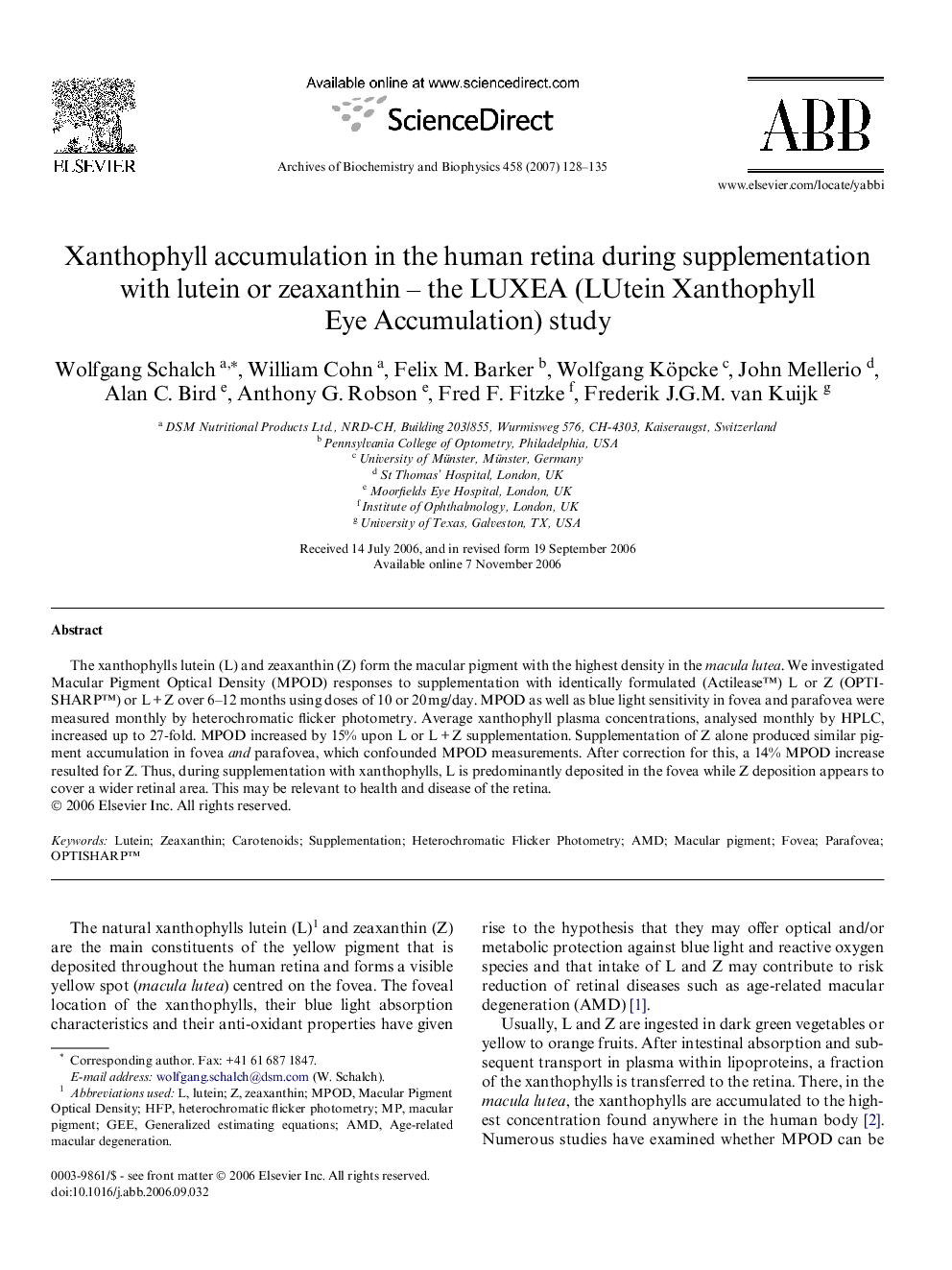| Article ID | Journal | Published Year | Pages | File Type |
|---|---|---|---|---|
| 1927195 | Archives of Biochemistry and Biophysics | 2007 | 8 Pages |
The xanthophylls lutein (L) and zeaxanthin (Z) form the macular pigment with the highest density in the macula lutea. We investigated Macular Pigment Optical Density (MPOD) responses to supplementation with identically formulated (Actilease™) L or Z (OPTISHARP™) or L + Z over 6–12 months using doses of 10 or 20 mg/day. MPOD as well as blue light sensitivity in fovea and parafovea were measured monthly by heterochromatic flicker photometry. Average xanthophyll plasma concentrations, analysed monthly by HPLC, increased up to 27-fold. MPOD increased by 15% upon L or L + Z supplementation. Supplementation of Z alone produced similar pigment accumulation in fovea and parafovea, which confounded MPOD measurements. After correction for this, a 14% MPOD increase resulted for Z. Thus, during supplementation with xanthophylls, L is predominantly deposited in the fovea while Z deposition appears to cover a wider retinal area. This may be relevant to health and disease of the retina.
